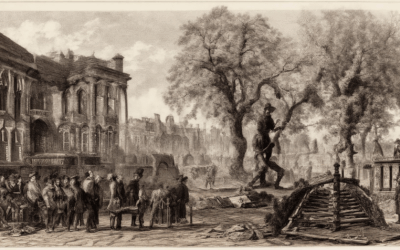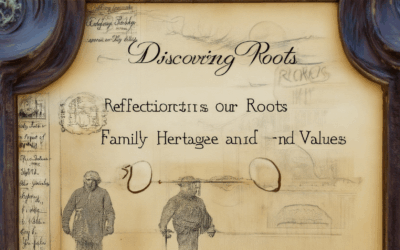Exploring historical lifestyle reflections offers a unique opportunity to delve deep into the annals of time, uncovering insights that resonate with our modern selves. By reflecting on the lives of historical figures, we gain wisdom and guidance that can aid us in navigating our own journeys of self-discovery. This exploration not only sheds light on the past but also provides a mirror to examine our present and future. Whether it’s through the stories of iconic leaders, everyday individuals, or cultural shifts, historical reflections reveal the intricate dance between personal growth and societal evolution. In this article, we will embark on a journey that blends the lessons of yesteryears with the challenges of today, offering a roadmap for self-awareness and progress.
Key Takeaways
- Reflect on your journey to unlock personal growth and self-discovery.
- Set clear, achievable goals for lasting success.
- Embrace challenges as stepping stones to growth and resilience.
- Practice gratitude to foster positivity and a more optimistic outlook.
- Seek feedback to gain fresh perspectives and drive improvement.
- Make reflection a consistent habit for sustained personal development.
- Document your life’s journey to preserve memories and valuable lessons.
- Balance work and self-care for holistic well-being and productivity.
- Learn from mistakes to build resilience and accumulate wisdom.
- Conclude with actionable insights to guide your future direction.

Real-World Examples of Reflections
Reflections occur in various forms in the natural and constructed world. Here are some common examples:
1. Geometric Transformations
- Mirrors: A classic example of reflection, mirrors reflect light to create images.
- Water Surfaces: The surface of water reflects sky and objects above it, creating ripple effects.
- Prisms: When light enters a prism, it reflects off the sides, creating a rainbow effect.
2. Natural Phenomena
- Rainbows: Light reflecting off water droplets in the atmosphere creates colorful spectra.
- Frost: Sunlight reflecting off ice crystals creates the shimmering effect seen on cold mornings.
- Camera Lenses: Cameras use reflection inside the lens to focus light and capture images.
3. Human-Made Objects
- Glasses: Lenses in eyewear use reflection to bend light and correct vision.
- Contact Lenses: These also use reflection to focus light onto the eye.
- Car Paint: Reflective paint on cars helps reduce drag and improves visibility.
4. Applications in Technology
- LCD Screens: Reflection inside the screen layers helps display images and videos.
- Microscopes: Reflection in the lens magnifies samples for closer inspection.
- Solar Panels: Reflection of sunlight helps generate electricity through photovoltaic cells.
These examples illustrate how reflection plays a crucial role in both natural and man-made systems, enabling various technologies and phenomena we encounter daily.
How to Write a Reflection on History
Reflection on history is a process of examining the past to gain insight into the present. It allows us to understand the events, people, and ideas that have shaped our world. Below are steps to help you write an effective reflection:
Steps to Write a Reflection on History
- Define Your Purpose: Reflect on a specific event, era, or concept in history. Clearly state what you aim to explore or analyze.
- Identify Key Themes: Focus on significant aspects such as causes, effects, and consequences of historical events.
- Use Evidence: Incorporate primary sources, documents, and reliable secondary sources to support your points.
- Connect to the Present: Draw parallels between historical events and contemporary issues to provide context and relevance.
- Express Personal Insight: Share your feelings, thoughts, and reactions to the subject matter.
- Edit and Revise: Ensure your reflection is clear, coherent, and free of grammatical errors.
Tips for Writing a Compelling Reflection
- Be Specific: Avoid vague statements. Use details to illustrate your points.
- Show Analysis: Go beyond summarizing events. Analyze their significance and implications.
- Use Examples: Provide concrete examples to illustrate your arguments.
- Stay Focused: Avoid digressing into unrelated topics. Keep your reflection centered on the subject.
Examples of Reflections
Sample Reflection on the Renaissance:
The Renaissance: A Time of Renewal and Discovery
The Renaissance was a transformative period in history, marked by a revival of learning and creativity. It was during this time that artists, scholars, and thinkers began to look back at ancient texts and classical cultures, drawing inspiration from the past to shape the future. The Renaissance not only preserved ancient knowledge but also laid the foundation for the scientific revolution and the age of exploration. Reflecting on the Renaissance reminds us of the importance of looking backward to move forward, as it bridges the gap between tradition and innovation.
Sample Reflection on Civil Rights:
Civil Rights: A Struggle for Equality
Reflecting on the civil rights movement brings to mind the courage and determination of individuals who fought against injustice. The struggle for equality involved numerous challenges, from legal battles to peaceful protests, yet it ultimately led to significant progress. The legacy of the civil rights movement continues to inspire us today, reminding us of the power of collective action and the enduring pursuit of justice. By reflecting on this history, we can better understand the sacrifices made and the lessons learned along the way.
Conclusion
Writing a reflection on history is a journey of discovery and self-expression. By thoughtfully exploring the past, we gain valuable insights that enrich our understanding of the world. Whether you’re reflecting on a specific event or broader trends, the goal is to connect history with the present and inspire future generations.

Reflecting on Past Experiences
To effectively reflect on past experiences, consider the following structured approach:
- Recall and Reflect : Begin by vividly recalling the experience, focusing not just on the surface details but also on the emotions and sensations experienced at the time.
- Evaluate Outcomes : Assess the outcomes of the experience against your expectations. Consider whether the results aligned with your goals or revealed unexpected twists that require further exploration.
- Learn from Mistakes : Identify any mistakes or errors and analyze the underlying reasons. This process mirrors problem-solving, helping you understand root causes and prevent recurrence.
- Celebrate Strengths : Acknowledge and celebrate your strengths and achievements. Recognizing success enhances confidence and highlights transferable skills for future endeavors.
- Identify Patterns : Look for recurring themes or patterns in your experiences. This insight may uncover personal growth trajectories or recurring challenges that shape your development.
- Seek Feedback : Engage others for their perspectives, which can offer new insights and balance your self-assessment. This external viewpoint aids in gaining a clearer understanding of your journey.
- Practice Gratitude : Focus on the positive aspects of your experiences. Appreciating the good can shift your mindset, fostering a more constructive reflection process.
- Journal Your Thoughts : Writing down your reflections provides a structured space for exploring emotions and ideas. This practice supports future growth by documenting your journey.
- Set Future Intentions : Based on your learnings, establish intentions or goals for moving forward. This proactive step applies your insights to future actions and growth.
- Be Compassionate with Yourself : Understand that reflection is not about perfection but growth. Embrace imperfections and recognize that every experience contributes to your evolution.
By integrating these steps, you engage in a holistic reflection process that enhances self-awareness and prepares you for future challenges.

Reflecting Over the Past Year
To effectively reflect over the past year, consider the following structured approach:
- Assess Achievements : Begin by listing your major accomplishments. Whether personal or professional, these milestones highlight your growth and progress.
- Identify Challenges : Reflect on obstacles you faced. Understanding these challenges helps in strategizing for future improvements.
- Learn from Experiences : Consider what you’ve learned during the past year. These insights are valuable tools for personal development.
- Set Goals for the Future : Based on your reflections, establish clear objectives for the coming year. This forward-thinking approach ensures continuous growth.
- Evaluate Relationships : Assess your interactions and relationships. Understanding dynamics can lead to stronger connections moving forward.
- Review Finances : If applicable, evaluate your financial status. This reflection aids in budgeting and financial planning.
- Reflect on Health : Consider your physical and mental well-being. This self-assessment promotes overall health and wellness.
- Engage in Self-Care : Recognize the importance of balancing work and leisure. Prioritizing self-care enhances overall quality of life.
- Stay Grateful : Acknowledge the positive aspects of your life. Gratitude fosters a more positive outlook.
- Seek Feedback : Gather insights from others. Their perspectives offer new insights and opportunities for improvement.
By systematically reflecting on these areas, you gain deeper insights into your journey, enabling wiser decisions and growth.
Reflecting on Your Past Year
Reflecting on your past year is a valuable exercise that allows you to gain insight, learn from experiences, and set the stage for future growth. Here’s a structured approach to help you effectively reflect on the past year:
1. Set Clear Goals
Start by defining what you aimed to achieve last year. Whether personal or professional, having clear objectives makes reflection easier. Ask yourself:
- What were your major goals?
- Did you meet these goals, and if not, why?
- What challenges did you face along the way?
2. Practice Self-Reflection Techniques
Engage in activities that encourage introspection. Journaling is a powerful tool that allows you to track your thoughts and emotions over the year. Consider questions like:
- What was one thing you’re proud of?
- What was one area where you struggled?
- How did you grow personally or professionally?
3. Learn from Mistakes
Reflection isn’t just about achievements—it’s also about understanding where you fell short. Identify mistakes and ask yourself:
- What could you have done differently?
- What lessons can you take into the next year?
- How can you avoid repeating the same errors?
4. Practice Gratitude
Take time to appreciate the positive aspects of your year. Reflect on the things you’re thankful for, whether it’s personal accomplishments, supportive relationships, or unexpected opportunities.
5. Plan for the Future
Use your reflections to guide your future actions. Set new goals, clarify your priorities, and outline steps to achieve them. This forward-looking perspective helps you create a roadmap for success.
6. Seek Feedback
Sometimes, an outside perspective can provide valuable insights. Share your reflections with trusted friends, mentors, or colleagues and ask for their opinions on your progress and plans.
How to Make Reflection a Habit
Regular reflection is key to continuous growth. Schedule regular check-ins with yourself, such as monthly or quarterly reviews, to maintain momentum and stay aligned with your goals.
By approaching reflection thoughtfully and systematically, you can gain deeper insights into your past year and lay a strong foundation for future success. Remember, reflection is not just about looking backward—it’s about moving forward with purpose and intention.

How to Write a Reflection of Your Life
To write a reflection of your life, consider the following steps:
- Define Your Purpose : Reflect on why you’re writing this. Are you documenting your life story, processing personal growth, or sharing lessons learned?
- Gather Your Memories : Start by recalling significant events, people, and experiences that have shaped your life. Consider both happy and challenging moments.
- Organize Your Thoughts : Break your memories into categories or themes. For example, group them by time periods (childhood, adolescence, adulthood) or by types of experiences (achievements, failures, relationships).
- Be Specific : Include details about your experiences. For instance, describe a particular moment or event rather than just listing general statements.
- Reflect on Yourself : Consider how these experiences have impacted your personality, beliefs, and goals. Think about the emotions and lessons you’ve learned from each experience.
- Highlight Challenges and Successes : Discuss both your struggles and triumphs. This balance shows growth and self-awareness.
- Write Authentically : Allow your unique voice to come through. Share your thoughts and feelings honestly, but aim for a respectful and mature tone.
- Edit and Revise : After drafting, review your reflection for clarity, coherence, and grammar. Make adjustments to ensure your story flows well and accurately represents your journey.
- Conclude Thoughtfully : End with a summary of what you’ve learned and how you plan to apply these insights moving forward.
By following these steps, you can create a meaningful and impactful reflection of your life that resonates with others.



0 Comments